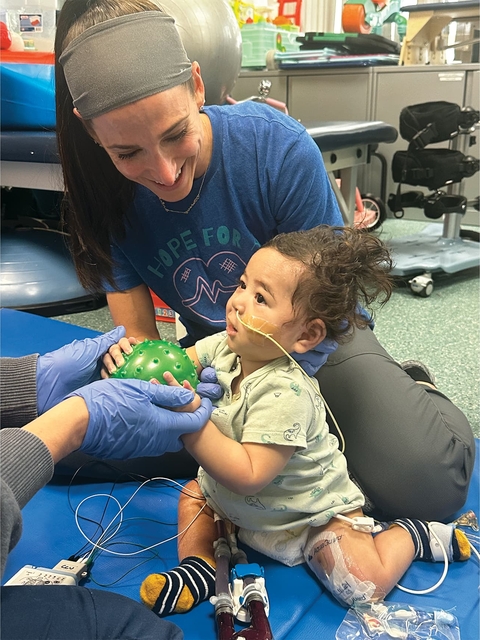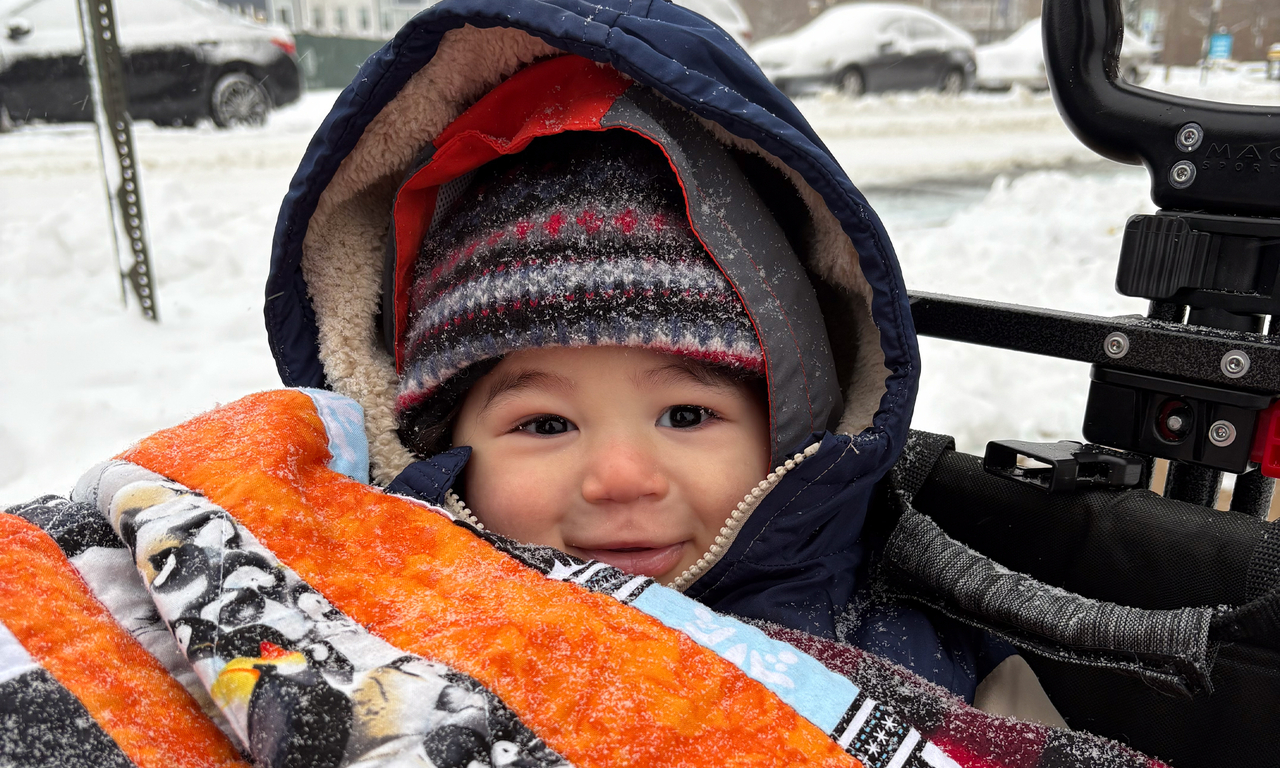From Heart Failure to Healing: Brice's Journey with the Hybrid VAD
From Heart Failure to Healing: Brice's Journey with the Hybrid VAD

Diagnosed prenatally, Brice was born with hypoplastic left heart syndrome (HLHS). His parents, Kayla and Christopher, were prepared for the staged reconstruction that many children with HLHS undergo over their first few years of life. After Brice was born, however, it became clear to his Virginia medical team that the complexity of his anatomy — including an abnormal valve and a heart that wasn’t pumping as strongly as it should — made the critical first surgery, the Norwood procedure, impossible. “We knew he wouldn’t survive without intervention,” says Kayla. So, the family turned to Children’s Hospital of Philadelphia (CHOP) for a second opinion.
In many cases, infants like Brice who have a single ventricle heart with a complex anatomy unsuitable for the Norwood operation undergo a hybrid procedure, which combines both surgical and interventional techniques. During this procedure, a surgeon places bands around both pulmonary arteries (called bilateral pulmonary banding) to reduce excess blood flow to the lungs, and also places a stent in the ductus arteriosus, which is the temporary blood vessel that connects the pulmonary artery to the aorta before birth. This provides enough blood flow to the body to stabilize circulation while the child waits for transplant. Unfortunately, many of these children ultimately do not fare well, and many do not survive.
CHOP’s Advanced Cardiac Therapies for Heart Failure Patients (ACT-HF) Program is dedicated to discovering new ways to use devices that help the heart function better (mechanical circulatory support), such as ventricular assist devices (VADs). They presented a different option for Brice: an innovative procedure called the hybrid VAD.
“The hybrid VAD is a relatively new procedure,” says Katsuhide Maeda, MD, PhD, the Director of Mechanical Circulatory Support and ECMO and the Surgical Director of the Heart/Lung Transplant Program at CHOP. “CHOP is one of few institutions that performs it.”
With this technique, a surgeon still uses bilateral pulmonary banding to control the blood flow to the lungs and the ductal stent to stabilize circulation, but they also implant a VAD – a mechanical heart pump.
“Patients who receive the hybrid VAD grow very well, and they’re able to participate in our intensive rehab program,” says Dr. Maeda. “This keeps them in good condition and makes them better candidates for transplant.”
“They told us the procedure was risky,” says Kayla. “But all we wanted was to give our son a chance. We were willing to do anything.”
At seven days old, Brice was transported to CHOP. He underwent surgery the next day and, shortly after, was listed for transplant.
Making strides with specialized rehab

A key element of CHOP’s Advanced Cardiac Therapies for Heart Failure Patients Program is intensive, interdisciplinary rehabilitation, including physical, occupational and speech therapy, for heart failure, VAD and post-transplant patients. For children with VADs like Brice, intensive rehabilitation helps ensure they are as healthy as possible for transplant.
“We know these kids are at risk for significant neuromotor delays,” says Amanda Waples, Brice’s primary physical therapist. “Our goal is to help them reach and maintain typical motor skills as well as to support parents’ and caregivers’ confidence in their ability to do so as well.”
For 4-month-old Brice, this included skills like reaching and grasping, pre-rolling skills, as well supported sitting. To promote normal development, the ACT rehabilitation team also provides enriching activities, such as outdoor therapy and even a music playgroup, similar to those a child would experience at home.
“I have such vivid memories of the day we took Brice outdoors for therapy,” says Amanda. “He was so happy, clearly having fun, and doing a great job with things he would’ve normally been fussy about.”
But just as Brice was beginning to thrive, a complication changed everything.
An unforeseen complication, a renewed hope
Although lifesaving, VADs can unfortunately introduce new risks, especially when a child has an extremely complex anatomy like Brice’s. To maintain sufficient blood flow from the VAD to support his body, Brice needed multiple cardiac catheterizations. During one such procedure, he suffered a major stroke that left him immobile. He was intubated and critically ill, and the team worried he would no longer be a candidate for transplant.
“It was traumatizing. Brice had already come so far,” says Kayla. “If we’d given up when he was originally diagnosed or when we were told there weren’t any options for him, he wouldn’t be here. I am a woman of strong faith, and I had to trust that whatever was supposed to happen would happen.”
Kayla remained by her son’s bedside, reading to him daily. During this critical time, Brice continued to receive specialized interventions from the ACT rehabilitation team to maintain his range of motion, ensure proper positioning, assess his muscle tone and provide family education individualized to Brice’s needs.
“Even when we were given the worst possible prognosis, the rehab team still showed up because they believed what I believed,” says Kayla. “That’s a true testament to their dedication, and it shows how much they love their jobs.”
Eventually, Brice opened his eyes and began tracking movements. With continued intensive rehabilitation — building on the groundwork laid before his stroke — he was able to be extubated, to eat, and even to sit up. Finally, he was ready for transplant.
Says Amanda, “Brice’s success speaks volumes about the benefit of a truly interdisciplinary team and the importance of the work we’re able to do. It was the privilege of a lifetime to be part of this chapter in Brice’s story, and I am so excited to see all the chapters ahead.”
Exactly seven months from the day he was listed for transplant, Brice received his new heart. Transplant surgery is incredibly intensive, particularly for infants like Brice, with complex anatomy, prior surgeries and multiple interventions. But Brice recovered even better than expected. He remained at CHOP for continued rehabilitation for two months, returning home the day before Thanksgiving.

The next chapter
Now back home in Virginia, Brice continues to make developmental strides, including assisted standing, holding a spoon, army crawling and even speaking. “He’s defying all the odds,” says Kayla. “No one knew he would ever be where he is now.”
Brice still receives outpatient physical and occupational therapy, and his 5-year-old sister, Mai-ly, is an active participant. “He’s very motivated by her,” says Kayla.
Brice’s journey provided valuable insights that have helped refine the hybrid VAD procedure for future children with similar diagnoses. “It’s comforting to know that his experience will make a difference for other children,” says Kayla.